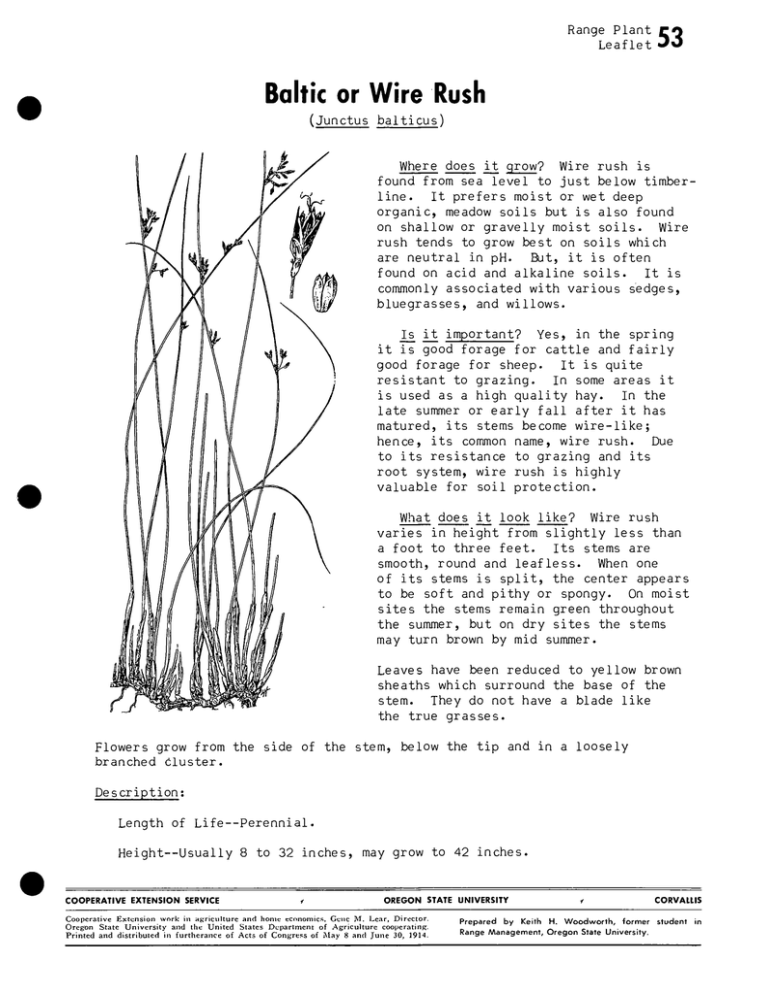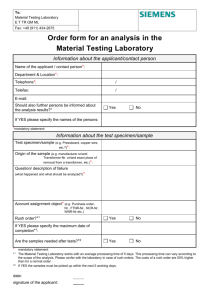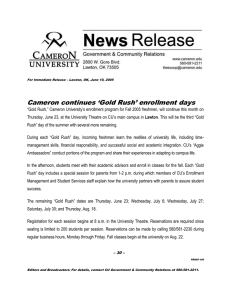Baltic or Wire Rush Leaflet 30
advertisement

Range Plant ro Leaflet 30 Baltic or Wire Rush (junctus balticus) Where does it grow? Wire rush is found from sea level to just below timberline. It prefers moist or wet deep organic, meadow soils but is also found on shallow or gravelly moist soils. Wire rush tends to grow best on soils which are neutral in pH. But, it is often found on acid and alkaline soils. It is commonly associated with various sedges, bluegrasses, and willows. Is it important? Yes, in the spring it is good forage for cattle and fairly good forage for sheep. It is quite resistant to grazing. In some areas it is used as a high quality hay. In the late summer or early fall after it has matured, its stems become wire-like; hence, its common name, wire rush. Due to its resistance to grazing and its root system, wire rush is highly valuable for soil protection. What does it look like? Wire rush varies in height from slightly less than a foot to three feet. Its stems are smooth, round and leafless. When one of its stems is split, the center appears to be soft and pithy or spongy. On moist sites the stems remain green throughout the summer, but on dry sites the stems may turn brown by mid summer. Leaves have been reduced to yellow brown sheaths which surround the base of the stem. They do not have a blade like the true grasses. Flowers grow from the side of the stem, below the tip and in a loosely branched cluster. Description; Length of Life—Perennial. Height—Usually 8 to 32 inches, may grow to 42 inches. COOPERATIVE EXTENSION SERVICE OREGON STATE UNIVERSITY Cooperative Extension work in agriculture and home economics, Gcuc M. Lear, Director. Oregon State University and the United States Department of Agriculture cooperating. Printed and distributed in furtherance of Acts of Congress of May 8 and June 30, 1914. Prepared by Keith H. Wood worth, former Range Management, Oregon State University. CORVALLIS student in How does it spread?—By seeds and rootstocks or rhizomes. Leaves—Reduced to yellowish-brown sheaths. Flowers—Small (less than 1/4 inch long) and borne in a flattened^, loosely branched side cluster. Each flower has six very small petals. Each petal is sharp pointed, purplish brown, and has white papery edges. Seeds—Are oblong in shape and small. The seeds are found in a manypointed, pale to dark brown egg-shaped capsule or pod. Roots—Thick, long and strong rhizomes or rootstocks with many fibrous roots. Stems are singularly spaced along the rhizomes. Does it look like anything else? Yes, it looks like common rush, spreading rush and salt rush. The stems of the first two rushes are found in clusters along the rhizome but wire rush has its stems arranged singularly along the rhizome. Salt rush has a thin reddish brown margin on its flower bracts (or petal) and is only found in marshes along Oregon's coast. Wire rush has a white margin on its flower petals. Plant sketch courtesy of U. S. Forest Service





